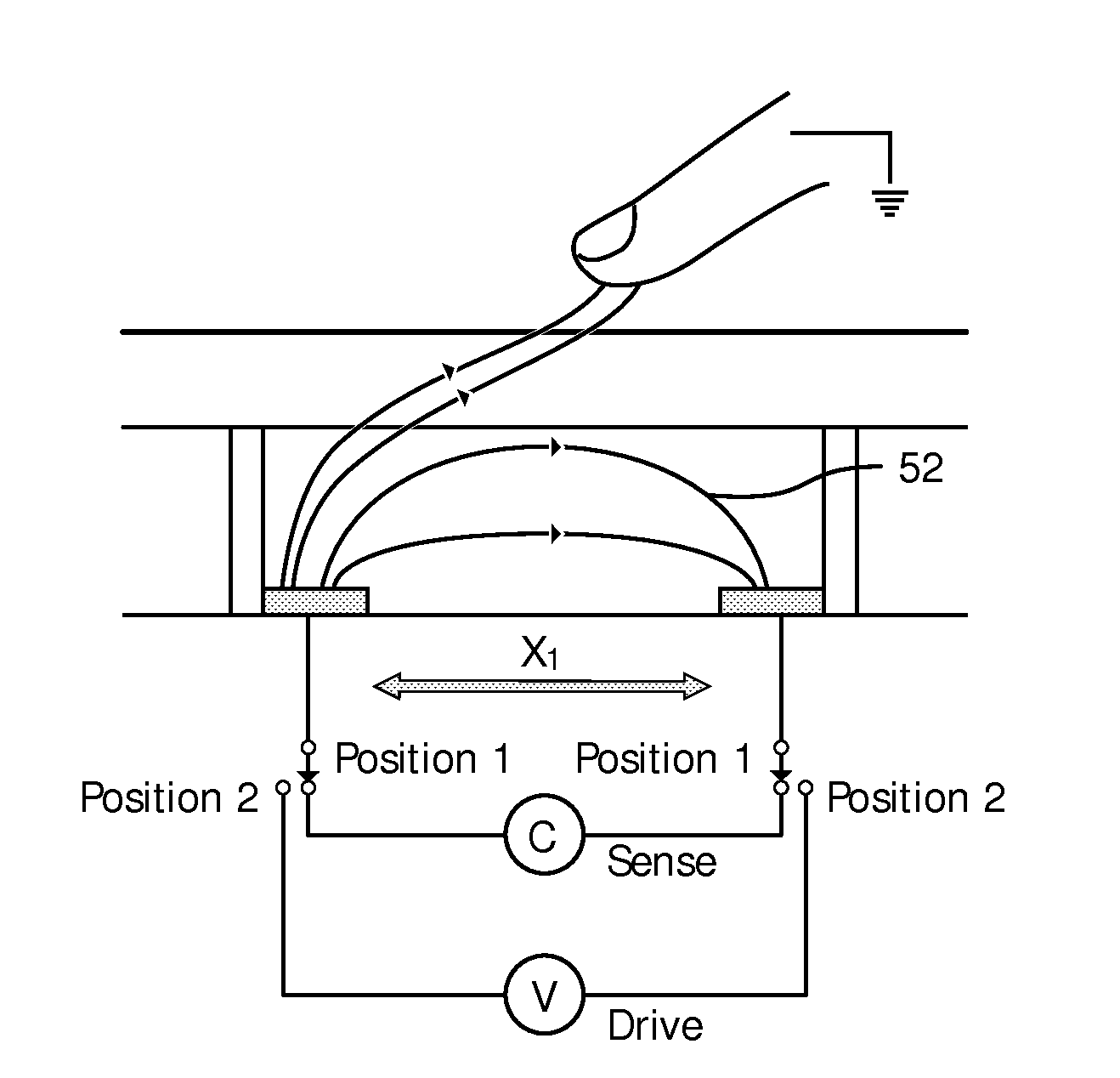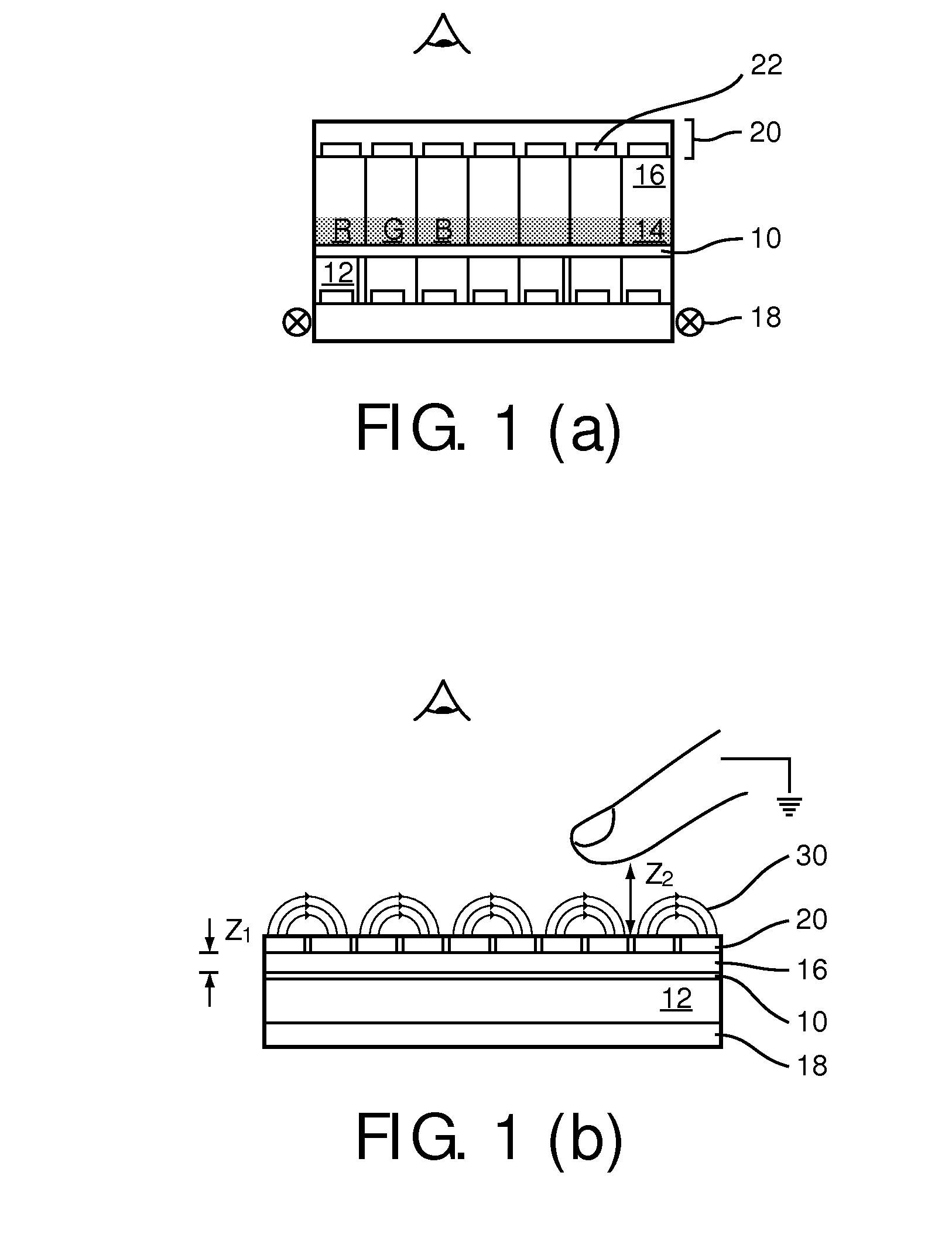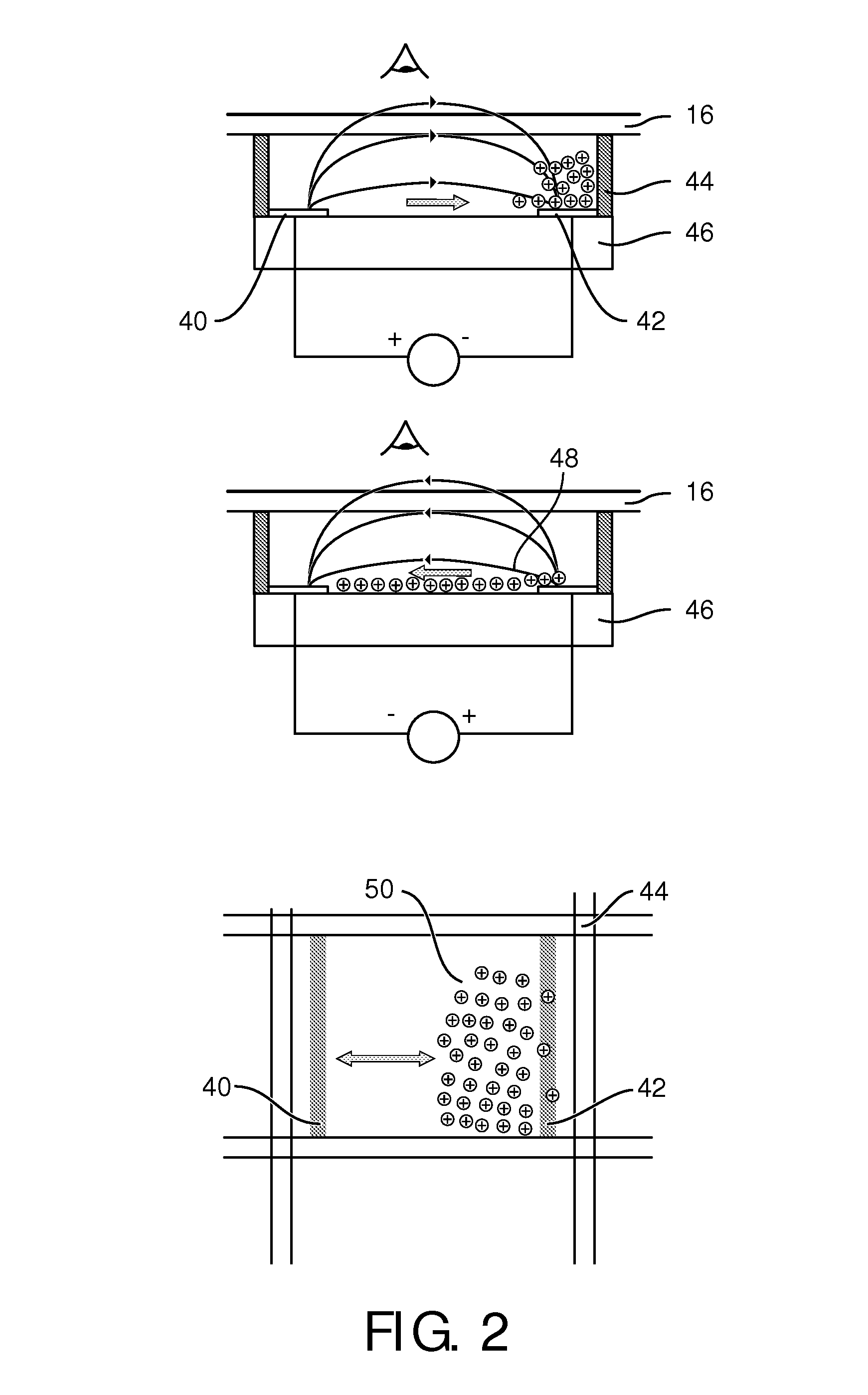Touch sensing output device
a technology of output device and touch sensor, which is applied in the direction of instruments, computing, electric digital data processing, etc., can solve the problems of reducing display brightness, wasting power, and reducing display brightness, so as to reduce manufacturing complexity and reduce the complexity of driving the system
- Summary
- Abstract
- Description
- Claims
- Application Information
AI Technical Summary
Benefits of technology
Problems solved by technology
Method used
Image
Examples
Embodiment Construction
[0046]The invention will first be described in relation to a display device, although it will be apparent that the invention can be applied more generally to other devices which have variable light transmission characteristics.
[0047]In all common existing displays, particularly in liquid crystal (LC), organic light-emitting diode (OLED), and most existing electrophoretic display technologies, the requirement for separating the array of capacitance touch-measurement electrodes from the display front surface is a consequence of the continuous ground plane on their front surface.
[0048]This is shown in FIG. 1. FIG. 1(a) is a cross section of a typical display that has a ground plane 10 overlying the LC cells 12. A color filter layer is shown as 14 and the coverglass is shown as 16. The light from a backlight 18 is modulated by the display pixels.
[0049]An attached capacitive-based touch-sensitive layer 20 is provided over the coverglass, and this uses additional transparent (ITO) electro...
PUM
| Property | Measurement | Unit |
|---|---|---|
| transparency | aaaaa | aaaaa |
| thickness | aaaaa | aaaaa |
| size | aaaaa | aaaaa |
Abstract
Description
Claims
Application Information
 Login to View More
Login to View More - R&D
- Intellectual Property
- Life Sciences
- Materials
- Tech Scout
- Unparalleled Data Quality
- Higher Quality Content
- 60% Fewer Hallucinations
Browse by: Latest US Patents, China's latest patents, Technical Efficacy Thesaurus, Application Domain, Technology Topic, Popular Technical Reports.
© 2025 PatSnap. All rights reserved.Legal|Privacy policy|Modern Slavery Act Transparency Statement|Sitemap|About US| Contact US: help@patsnap.com



